12 National Raspberry Day Bramble & Bush Planting Ideas
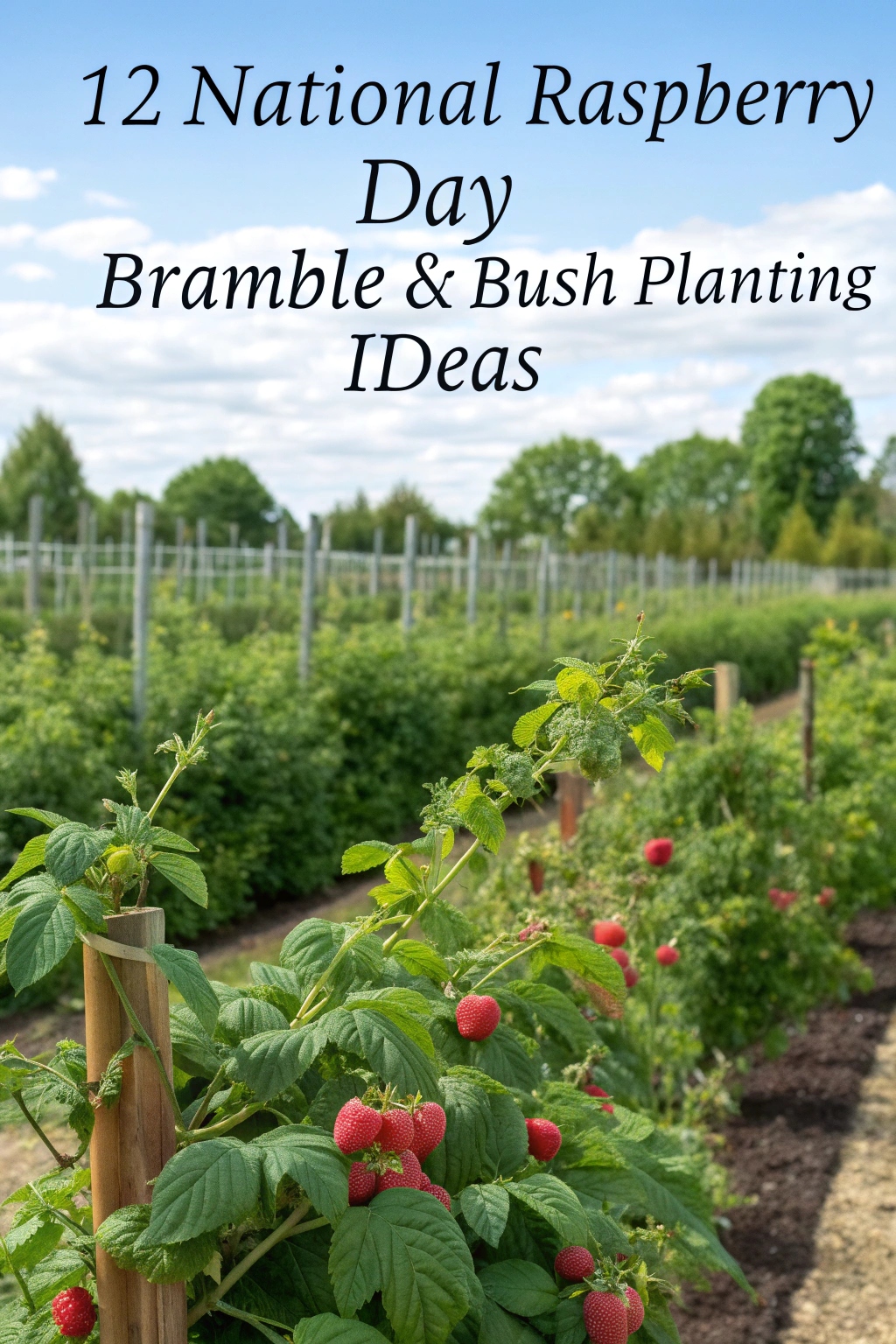
Ready to celebrate National Raspberry Day by starting your own bramble patch? You’ve got a chance to grow delicious raspberries with the right know-how. Begin by picking hardy varieties suited to your climate, like ‘Heritage’ or ‘Boyne’. Make sure you’ve got a full-sun spot and test your soil’s pH for the ideal range. Want to nail every step for a thriving harvest? Stick around for the full guide.
Choosing the Perfect Raspberry Variety for Your Garden

When choosing the perfect raspberry variety for your garden, consider factors like climate, space, and flavor preferences. Summer-bearing raspberries produce one large crop in early summer, while everbearing varieties offer two harvests, in summer and fall. Popular options include ‘Heritage’ for its hardy nature and sweet taste, or ‘Boyne’ for cold climates. Research disease resistance and growth habits to assure your selection thrives in your specific garden conditions and meets your expectations.
Selecting the Ideal Location for Your Bramble Patch

When selecting the ideal location for your bramble patch on National Raspberry Day, prioritize a spot with full sun exposure, as raspberries thrive with at least six hours of direct sunlight daily. Guarantee the area has well-drained soil to prevent root rot, and choose a location sheltered from strong winds to protect the canes. Avoid low-lying areas prone to frost, as this can damage early growth. Proper site selection guarantees a healthy, productive raspberry patch.
Preparing the Soil for Optimal Raspberry Growth

Preparing the soil is essential for ideal raspberry growth. Start by choosing a well-drained location with full sun exposure. Test the soil pH, aiming for a range of 5.5 to 6.5. Amend the soil with organic matter like compost or aged manure to improve fertility and structure. Remove weeds and rocks to prevent competition and facilitate proper root development. Finally, loosen the soil to a depth of 12-18 inches to encourage strong root growth.
Designing a Sturdy Trellis System for Support

Designing a sturdy trellis system is essential for supporting raspberry plants as they grow. Use durable materials like wooden posts or metal stakes, ensuring they are at least 6 feet tall to accommodate the plants’ height. Install crossbars or wires at different levels to provide multiple support points. Secure the structure firmly in the ground to withstand wind and the weight of fruit-laden canes, promoting healthy growth and easier harvesting.
Planting Raspberry Canes at the Right Depth
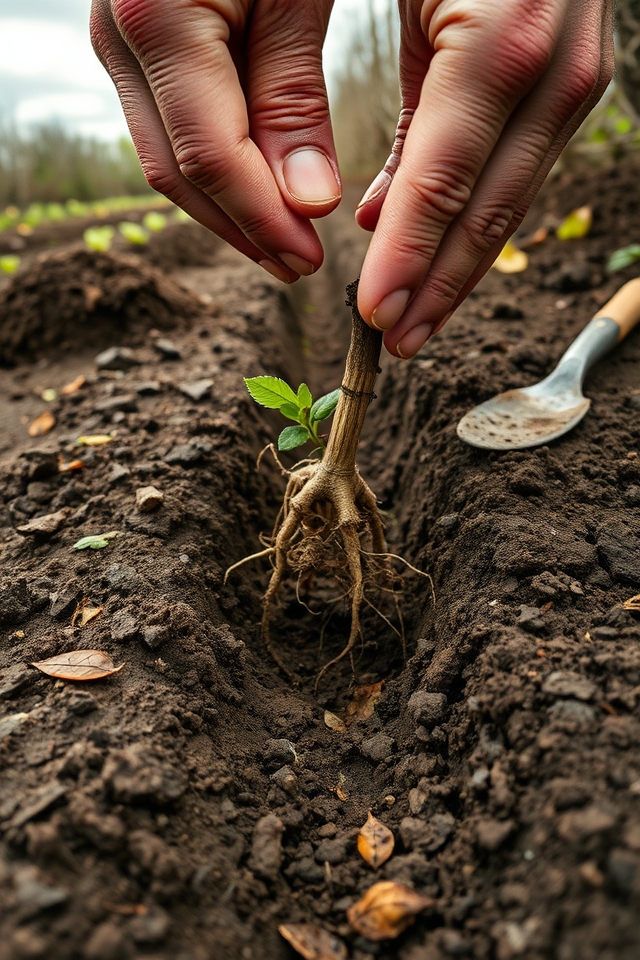
When planting raspberry canes, depth is essential for healthy growth. Set the canes in a hole or trench about 2-3 inches deeper than they were in the nursery, ensuring the crown is just below the soil surface. This helps establish strong roots. Cover with soil, firm it gently, and water thoroughly. Proper depth prevents the canes from drying out and supports stability, encouraging robust growth for a bountiful harvest.
Spacing Your Bushes for Maximum Yield

When spacing raspberry bushes for maximum yield, aim for 2-3 feet between plants within a row to allow for adequate airflow and sunlight. Rows should be spaced 5-8 feet apart to prevent overcrowding and facilitate easy access for maintenance and harvesting. Proper spacing reduces competition for nutrients and water, minimizes disease risk, and guarantees each bush can grow vigorously, leading to a bountiful harvest of juicy raspberries.
Incorporating Companion Plants for Natural Pest Control

Incorporating companion plants alongside raspberries can be an effective strategy for natural pest control. Plants like marigolds repel harmful insects with their strong scent, while garlic and onions deter pests with their pungent odors. Nasturtiums attract beneficial insects that prey on pests, protecting raspberry plants. By strategically planting these companions, gardeners can reduce the need for chemical pesticides, fostering a healthier ecosystem and ensuring a thriving raspberry harvest.
Creating a Container Garden for Small Spaces
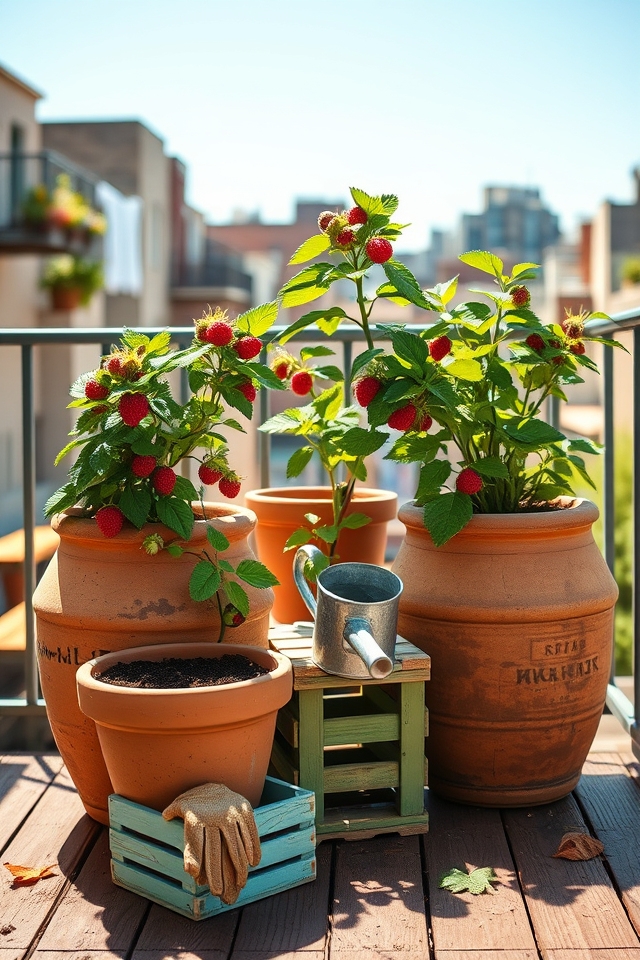
Creating a container garden is a perfect solution for small spaces when celebrating National Raspberry Day. Use large pots or containers with good drainage to plant raspberry varieties suited for compact growth, like dwarf or everbearing types. Place them in a sunny spot, ensuring at least 6-8 hours of direct light daily. Use well-draining soil mixed with compost, and water regularly to keep the soil moist but not waterlogged for healthy growth.
Mulching Techniques to Retain Moisture and Control Weeds
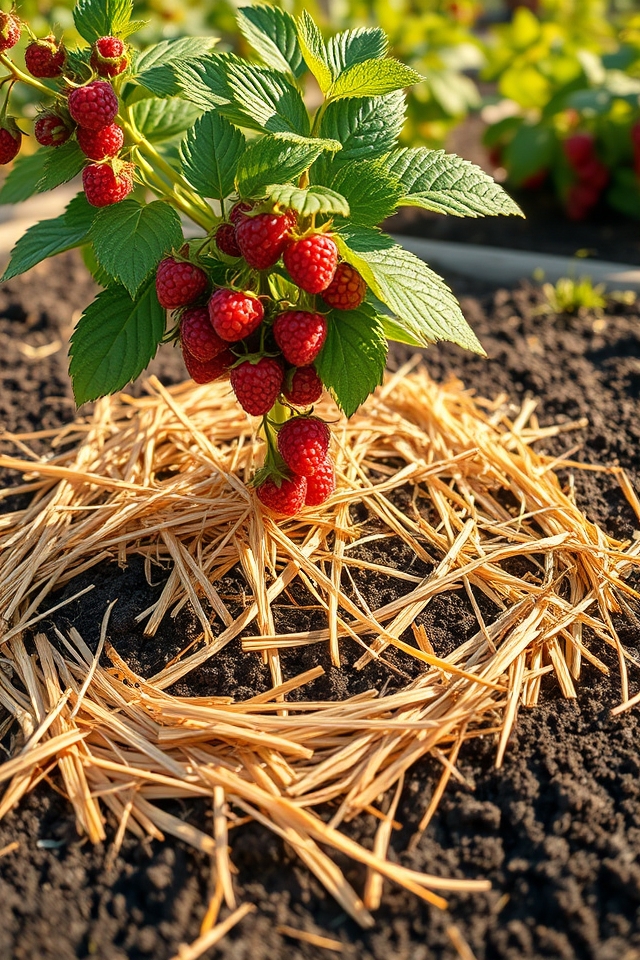
Mulching is a key technique for retaining moisture and controlling weeds around raspberry plants. Apply a 2-4 inch layer of organic mulch, such as straw, wood chips, or compost, around the base of the plants, keeping it a few inches away from the canes to prevent rot. This layer helps conserve soil moisture, reduces weed growth, and maintains a stable soil temperature. Replenish the mulch annually to maintain its effectiveness.
Pruning Tips for Healthy and Productive Plants
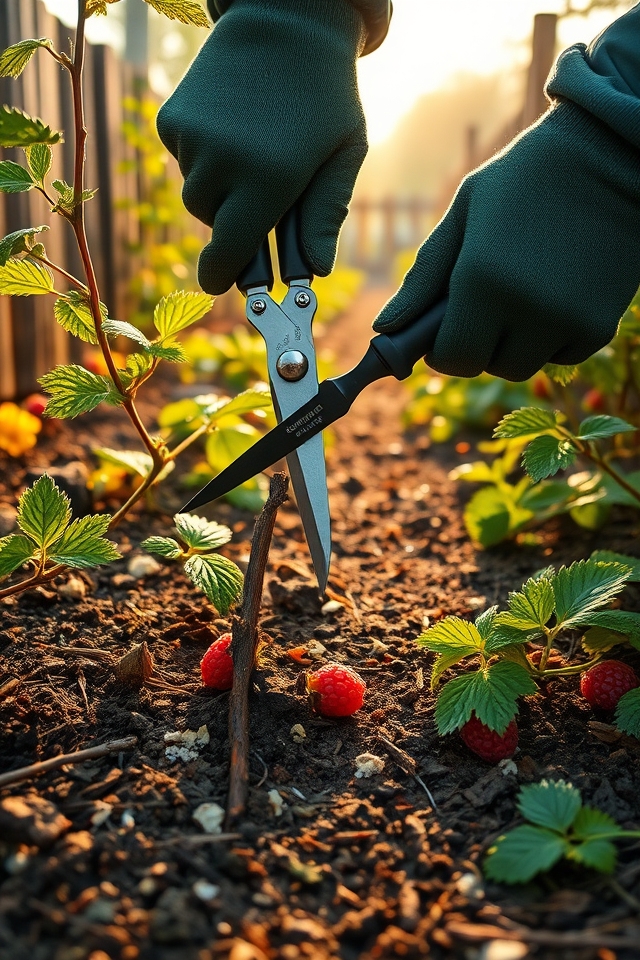
Pruning is essential for maintaining healthy and productive raspberry plants. Remove dead, damaged, or weak canes in late winter or early spring to improve air circulation and reduce disease risk. For summer-bearing varieties, cut back the canes that fruited last season to ground level. For everbearing types, trim the top portion of canes that produced fruit in fall. Always use clean, sharp tools to make precise cuts and prevent the spread of pests or infections.
Watering Strategies to Keep Your Raspberries Thriving
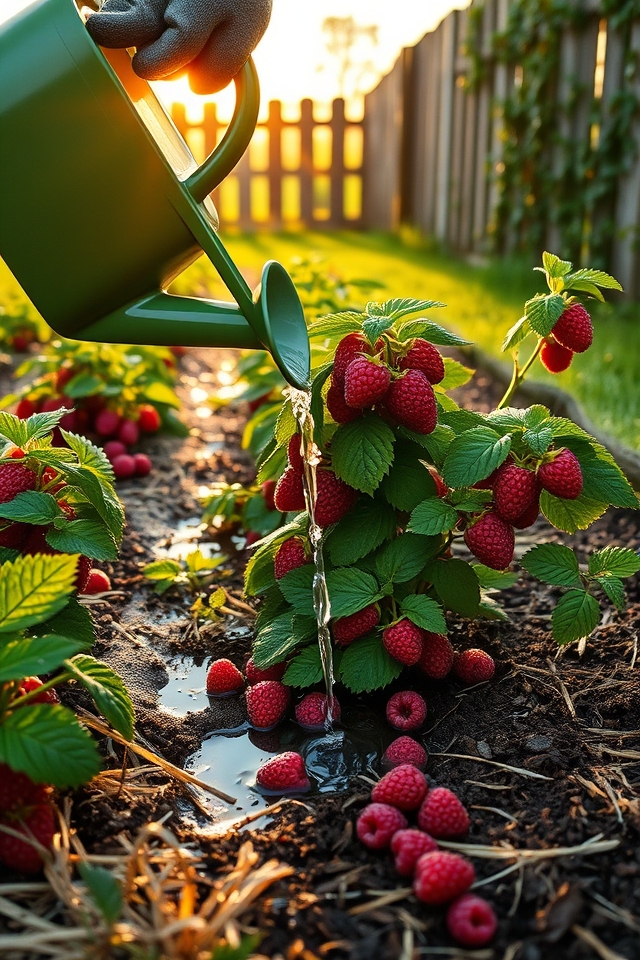
Proper watering is essential for healthy raspberry plants. Raspberries need consistent moisture, especially during fruiting, to guarantee juicy, plump berries. Aim to provide 1-2 inches of water per week, either through rainfall or irrigation. Water deeply at the base of the plants to encourage strong root growth, avoiding overhead watering to prevent fungal issues. During hot, dry spells, increase frequency, and use mulch to retain soil moisture and reduce evaporation.
Harvesting and Storing Your Raspberry Bounty
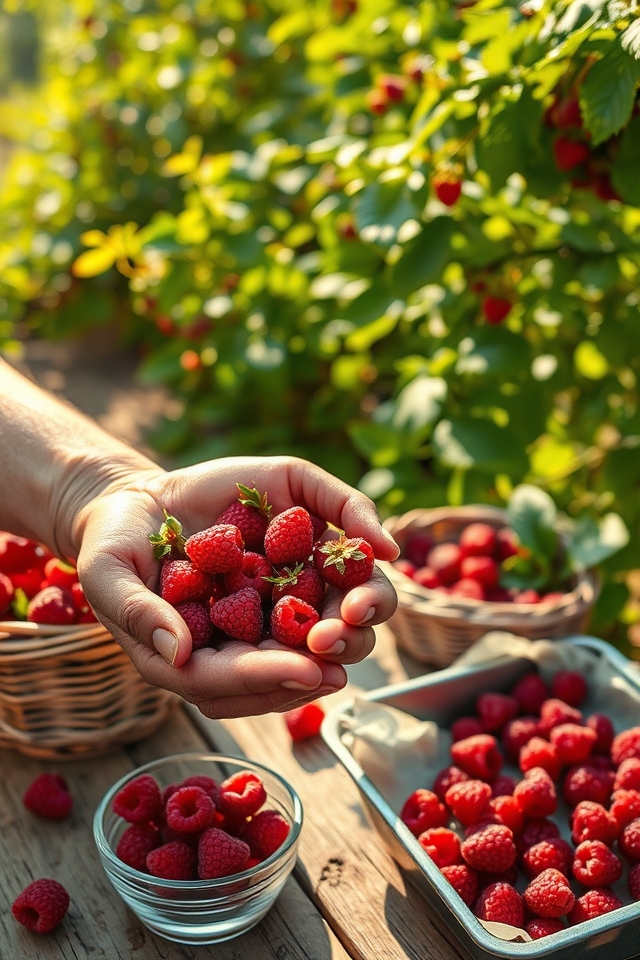
Harvesting raspberries at their peak guarantees the best flavor and nutrition. Pick them when they are fully ripe, typically bright red and easily detachable from the plant. Gently store them in shallow containers to avoid crushing. Refrigerate immediately to maintain freshness, as raspberries are highly perishable. For longer storage, freeze them on a tray in a single layer before transferring to airtight bags. This preserves their shape and taste for future use in recipes.





